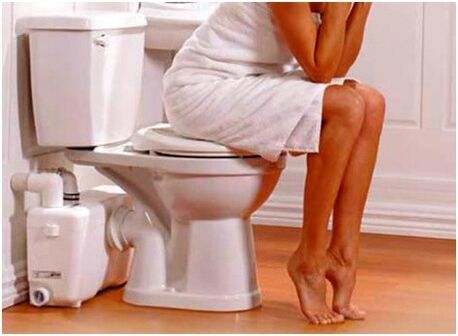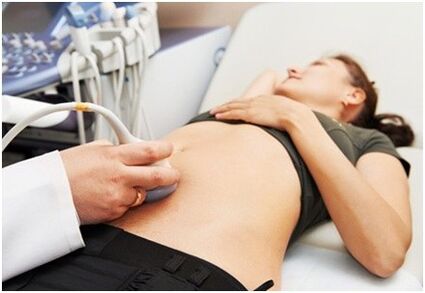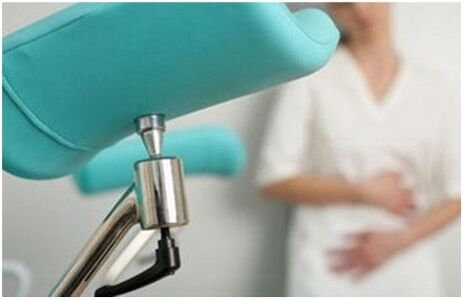One of the unpleasant diseases that have become widespread in the modern world is inflammation of the bladder or cystitis.This disease may be independent or may be a complication of other pathologies.Cystitis is a disease of the urinary tract, which consists in inflammation of the bladder mucosa.It is found in both men, women and children.The female floor is more susceptible to this disease due to the characteristics of the anatomy of his body: the female urethra is short and wide, which is very convenient for the penetration of infection into the body.Many people consider cystitis a female disease.The question arises here: Do men have cystitis?Answer: Of course, this happens, only rarer.At the rate of cystic frequency in women is about 25%and in men - 0.5%.
The appearance of cystitis

The main reason for the development of the inflammatory inflammatory process of the bladder is E. coli, but the danger is also represented by chlamydia, ureaplasma and mushrooms from a candidate.The development of cystitis is facilitated by a sedentary lifestyle, which causes impaired blood circulation of the pelvic and bladder, reduction of immunity, disorders of material metabolism, menopause, consumption of spicy foods and diabetes.Cystitis occurs in two forms: acute and chronic.In acute cystitis, the patient has frequent and painful urination with the possible blood release.The symptoms of chronic cystitis are similar but not as pronounced.Chronic cystitis in the absence of the necessary treatment may go into interstitial.
All forms are able to make serious changes in the usual lifestyle, reduce efficiency and make psychological inconveniences, so the first symptoms should start competent treatment with a specialist.Urologists and gynecologists are involved in the treatment of cystitis.These experts determine how to treat bladder inflammation, prescribe treatment, which generally include tablets to increase immunity, relieve inflammation and antibiotics.
Speaking of female cystitis, it is important to mention that this disease is inclined to worsen before menstruation.Cystitis during menstruation is a very common occurrence.During this period, due to the anatomical and biological characteristics of the female body, the penetration of bacteria, protozoa and viruses into the floor of the floor and the urethra became more faster and more dangerous.In addition, during menstruation, the immunity of a woman or girl is very vulnerable, and isolated blood with a non -compliance with hygiene can become an excellent source of eating for uninvited guests.In addition, the vagina has mushrooms of the genus Candida, capable of provoking the cystitis themselves when immunity decreases.
Pediatric cystitis is also more common in girls than in boys.This is due to the close location of a short broad urinary system and anus.Also, bladder inflammation in children can be caused by hypothermia, weakening of the immune system and hereditary factor.The quotation of babies is facilitated by the constant wearing of diapers, which is so common today and the presence of stones in the urinary organs.
Inflammation of the bladder in men is characteristic of representatives of adulthood.The male symptoms of this disease are identical to the females.Almost always the cause of the development of cystitis in men lies in the penetration of infection through the blood from adjacent inflammation.In addition to the traditional perception of the causes of cystic, psychosomatic provocations are also possible.Cystic psychosomatics are performed, as this disease manifests itself during the life period, it changes.Often there is an inflammation of the bladder in people who tend to limit their emotions or suppress them.
Types of cystitis
As already noted above, cystitis is characterized by acute and chronic form.In acute inflammation of the bladder, it is understood as a patient who first appeared in a patient who has not entered a chronic illness.The exacerbation of cystitis and acute form of cystitis are not synonymous.Exacerbations show complications of the disease.In the absence of effective and complete treatment, acute cystitis goes into chronic.The development of acute cystitis is unexpected.Symptoms of acute cystitis are more chronic.Cystitis is diverse in its forms.Doctors distinguish the following species: hemorrhagic, interstitial, radiation, sexual, postcoit, cervical, chemical, allergic and parasitar cystitis.Think more in detail:
- Hemorrhagic cystitis is an inflammation of the bladder provoked by infection.It is characterized by the release of urine with an unpleasant odor and bloody discharge;
- With interstitial cystitis, the inflammatory process develops due to non -infectious nature.This type is characterized by painful sensations when filling the bladder and reducing its volume.With interstitial cystitis not only the mucous membrane becomes inflamed, but also the submucosal layer;
- One of the consequences of radiation therapy is radiation cystitis.This happens due to damage to the bladder mucosa;
- Due to changes in the microflora based on gender, sexual cystitis develops.Its subspecies is a venereological cystitis caused by sexually transmitted diseases;
- When the infection enters the urethra and bladder, post -desiital cystitis develops.Its main pathogens are considered to be intestinal sticks, mycoplasmas and other infections;
- Cervical cystitis - inflammation of the bladder neck.This type can be manifested by urinary incontinence;
- In the case of metabolic disorders, cystitis may develop more special when the kidneys begin to release crystals of calcium salt;
- With the intoxication of the bladder, chemical cystitis develops, but it is not particularly common;
- The allergens that have penetrated the human body (in the form of food, medicines, cosmetics and household chemicals) are able to cause allergic cystitis;
- Helminic invasions are often capable of causing parasitic type of cystitis.

Regardless of the type of cystic, antibacterial drugs will include treatment, bed rest, dry heat, herbal decoction and sufficient fluid intake are possible.
Symptoms of cystitis
Symptoms of cystitis in women, men and children are mostly identical.As a rule, cystic provokes frequent urination in small portions, bringing a feeling of pain and burning.The urine becomes muddy and acquires a pungent odor.There are frequent cases of a small amount of blood together with the urine.With cystitis, weakness and pain in the lower back can be observed.Symptoms of cystitis in children and in the elderly are not as pronounced and can occur in the form of temperature changes, stomach pain and nausea.In the elderly, cystitis can occur asymptomatic.Another symptom of cystitis is urinary incontinence.
Cystitis in children is not always determined immediately, as it is difficult for the child to explain their condition and the nature of pain and newborns will not be able to explain anything at all.Children usually have a condition of weakness, discomfort in the lower abdomen, rubbing and burning, as in adults.The color of the urine turns dark yellow.The child becomes slow and the temperature is observed up to 38 degrees.Cystitis in boys is more common than in girls.
The causes of cystitis
The most common cause of the development of cystitis is the penetration of the bladder through the urethra of the bacteria.Cystitis after intercourse develops due to prolonged rubbing of the urethra.As a rule, the first symptoms of cystitis after sexual communication are observed after 12 hours.The reason for the development of cystica may be an allergy to intimate cosmetics.In children, the cause of the cyst may be the pathology of the urinary organs when the urine course is disturbed and may fall back into the ureter.In the elderly, the process of movement is often complicated and they lead a sedentary lifestyle.This leads to incomplete emptying of the bladder and a rare release of urine, which can lead to the development of cystitis.People who often refrain from urinating for various reasons are the subject of Kuditia.The presence of a tumor can become one of the causes of cystitis, but this phenomenon is rare.

The causes of cystic in women are associated with impaired vaginal microflora.Most often, women manifest infectious and allergic types of inflammation.Gonorrhea with no less success can provoke cystitis.A big risk for women is considered hypothermia.So, we emphasize the most common causes of cyst in women:
- discrepancy with personal hygiene;
- hypothermia (sitting in cold);
- urinary stagnation;
- weak immunity;
- pregnancy;
- Surgical intervention in the genitals and their infection.
The causes of cystic in men are the presence of diseases of the urethra, against which the inflammation of the bladder is a complication.In general, the causes are similar to females: urine stagnation, hypothermia, E. coli and gonorrhea (and other PPBs) also provoke the disease.Cystitis in men can be associated with tuberculosis of the genological system.In the presence of infectious and viral diseases, cystitis may develop due to the hematogenous pathway.The development of cystitis is facilitated by diabetes mellitus, abdominal injuries, stress and surgical interventions in the genotor system.
Cystitis diagnosis
The basis of diagnosis in cystitis is laboratory tests.In order to confirm or identify cystica, the patient may be referred to the transmission of the following tests:
- General blood test - allows to identify an inflammatory process to increase ESR and leukocytes;
- General urine analysis - in the presence of cystitis, the protein shows.The results of a microscopic examination of cystitis sediment will increase leukocytes and red blood cells.Urine with cystitis becomes muddy and can turn pink in the case of isolated blood;
- Urine analysis according to Nechiporenko - they are addressed to it in the event of erythrocyte urine in sediment and a large number of leukocytes.For this analysis it is necessary to transmit the average flow of urine in the morning;
- The bacteriological diagnosis of urine allows you to identify the culprit of cyst.This is important for prescribing antibacterial therapy;
- Special leukocyte test strips allow you to calculate their high urine concentration;
- The test strips on the nitrites allow you to detect infection in the urinary tract.

During menstruation, women should not take urine for tests as the results may be false.
Rules for taking urine analysis for cystitis
Before proceeding with the collection of morning urine, it is necessary to rinse the genitals with hot water or a solution of disinfectant.Before urine analysis, you cannot consume foods that can affect the color of the urine, it is better not to drink compotes, fruit drinks and kefir (affects acid flora).In addition, you cannot take diuretics and laxatives.
Cystitis
Is it possible to cure cystitis forever?This is probably the main question that the people who have personally encountered this disease is worried.This is possible if you start proper treatment at this time.How and how to treat cystic
As a rule, the doctor chooses complex therapy.We explain that the amount of daily water consumption should be at least 2-2.5 liters, and the diet involves the consumption of diuretics and the rejection of alcohol, coffee, spicy, fried, smoked, salty, sour, canned and preservatives.Compliance with these regimes is a general rule for the treatment of cystitis in women, in men and in children.We will analyze in more detail aspects of the treatment of cystitis.
Treatment of cystic in women does not require hospitalization and can be done at home.The heating pad attached to the bottom of the abdomen and a warm bath will help to deal with the unpleasant symptoms.During the treatment of cystitis, women will have to temporarily abandon sexual intercourse.Belladonna candles will help soothe inflammation.Provided to comply with the doctor's requirements, the treatment lasts less than a week.Important questions for women: How to treat cystic during pregnancy and is it dangerous for the fetus?
Cystitis is a disease that, in the absence of proper treatment during pregnancy, can cause complications in the form of kidney infection and premature birth.For the treatment of cystitis during pregnancy, doctors choose the most favorable medicines.Complexity is caused by infectious cystitis, as antibiotics are not recommended for the fetus for treatment.Cystitis after birth develops due to the closed position of the bladder and disruption of its blood bloods during fertility, catheterization and cooling, as well as due to the weakening of immunity after birth.The cystitis that occurs during lactation is more conducive to treatment with plant medicines.
To eliminate pain, frequent urination, doctors prescribe antispasmodic drugs and non -steroidal anti -inflammatory drugs.Physiotherapy and sanatoriums will be good assistants for improving the condition after exacerbation and during remission.

Treatment of cystitis in children should be prescribed and controlled exclusively by the doctor.The independent goal of antibiotics for children can lead to serious health problems in the future.Children of patients, such as adults, need peace, diet and warm sitting baths.The main task of parents in the treatment of children is strict adherence to the medical recommendations, more specifically the dose of medicines and the duration of their use.Chronic cystitis in children is a major consequence of phimosis, sexual infections, urethritis, diverticulum and other diseases.This suggests that the treatment of chronic cystitis will be built on the basis of the accompanying pathology.
In order to prevent cystitis in children and adults, it is useful to take preventative measures.Cystic prevention involves compliance with hygiene rules (water treatments with soap every day), wearing clean underwear, strengthening immunity, competent and useful nutrition.
























